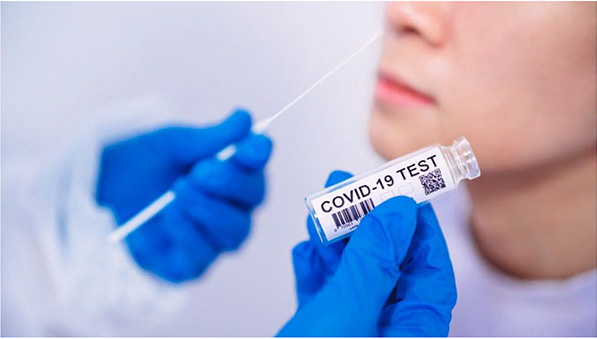CDC Reverses Recommendation on COVID - 19 Testing for Asymptomatic Individuals
 On August 24, the CDC has revised its guidelines for COVID-19 testing, now advising that individuals who have been in close contact with someone infected with the virus but do not exhibit any symptoms do not need to be tested for the disease. Close contact is defined as being within six feet of a person with the coronavirus and for at least 15 minutes. However, testing may still be advised for individuals at high-risk, healthcare providers, or pursuant to guidelines from local and state public health authorities.
On August 24, the CDC has revised its guidelines for COVID-19 testing, now advising that individuals who have been in close contact with someone infected with the virus but do not exhibit any symptoms do not need to be tested for the disease. Close contact is defined as being within six feet of a person with the coronavirus and for at least 15 minutes. However, testing may still be advised for individuals at high-risk, healthcare providers, or pursuant to guidelines from local and state public health authorities.
This new revision is causing confusion among the healthcare community, especially as it has been thought that patients can be most contagious immediately in the few days after they have been exposed/infected by the virus but are not showing symptoms. Disease modeling has shown that 50% of transmissions can be attributed to individuals in this stage without symptoms, and many never develop symptoms or feel sick. This new guideline could potentially make it more difficult to identify individuals who could potentially spread the virus, specifically if exposed asymptomatic individuals are not tested or isolated.
This move seems to conflict with previous goals to increase and expand access to testing. In fact, earlier this summer, the NIH had announced plans for its Rapid Acceleration of Diagnostics program (RADx), with a goal to increase testing in the coming months and the significance of identifying symptomatic patients.
According to the CDC, approximately 40% of infected people may never develop symptoms. However, if asymptomatic individuals will no longer be required to be tested, it will be difficult to truly understand the accuracy of this data. An additional benefit in testing and tracking asymptomatic individuals is for protection of their own health, as the long-term consequences and effects of COVID-19 are still not well known, and therefore it is more important for people to know if they have been infected by the virus.
The CDC has not provided clear reasons for the reversal in testing guidelines and directed questions to the US Department of Health and Human Services, which stated, “testing capacity has massively expanded, and we are not utilizing the full capacity that we have developed…we revised the guidance to reflect current evidence and the best public health interventions.” Lack of tests or supply chain disruption have not been indicated to be factors in this decision. Other factors that may have been considered were poorly timed testing, such as situations where asymptomatic people get tested too soon after known contact with an infected person, which could lead to false negative results.
Notwithstanding the changes in testing guidelines, it is wise for individuals to take personal responsibility, and take a quarantine period if they know they were exposed to the virus, even if they are not showing symptoms.
Sources: CDC, August 2020, NIH, August 2020.